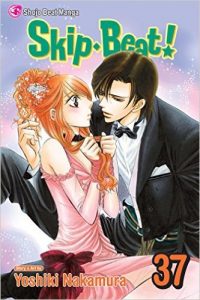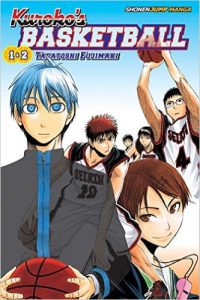Idol Dreams Volume 3 by Arina Tanemura
Well, I spent the first two volumes really hoping that Tanemura would be able to pull off the inherently problematic premise of a 30 year old heroine with arrested development suddenly being given the chance to relive her teen years through magic teen idol pills, but as the various love triangles start to develop with Chikage’s two personas I found myself wishing that the series would wrap up quickly before it starts to head into some uncomfortable territory.
One part of this volume that I liked very much is more time spent with Chikage as an adult. She runs into her long-lost crush Haru and they start to reconnect. Tokita keeps interfering in any situation where Haru and Chikage might become more intimate, even though he doesn’t really have a logical excuse for his actions. Haru has been a bit too mysterious so far, so it was good to get some of his backstory filled in, and see how it is clear that he really did care for Chikage when they were teenagers and he still has feelings for her. It was fun to see the teenage bonds of friendship resurface between Chikage and the two men as they hang out as a trio for the first time in years. Haru is very observant, and seeing how Tokita keeps reacting to Chikage, he decides to step back, but this is only temporary. What is more problematic is that Chikage really can’t relate to anyone intimately as an adult, and she reacts like a flustered teenager to Haru’s overtures. At this point, I’m convinced that she needs therapy more than magic teen idol pills.
Chikage’s adventures as Akari in this volume were a bit more dynamic as she has to manage babysitting duties and breaking into a school in disguise. However, what I was hoping wouldn’t happen in this series happened, as Akari decides to date a 16 year old. I find this more creepy than anything, and I hope this is really short-lived. I’ve enjoyed Arina Tanemura series so much in the past, but now I’m wondering if I should just fill in some of the gaps in my Sakura Hime manga collection and going back and reading that instead. I’m still firmly team Tokita, as he’s clearly the only man that Chikage can actually relax around and be herself with. I hope that the romance swings more that way in future volumes.





Recent Comments